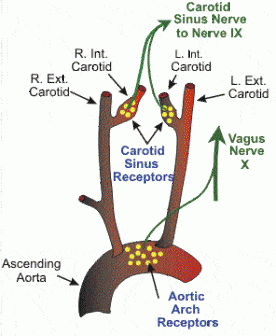Bilateral Vagotomy to Determine Autonomic Involvement in Airway Response
7/9/2014
Jaime, Cyphert M. “Bilateral Vagotomy as a Tool for Determining Autonomic Involvement in Airway Responses in Mouse Models of Asthma” Springer Link, 2013. Web. 30 July 2014.
This chapter describes the use of bilateral vagotomy as a tool for determining autonomic regulation of airway responses to the exogenous bronchoconstrictor thromboxane mimetic U46619 in an acute model of asthma in the mouse. Mice receive a sensitization of ovalbumin (OVA) and adjuvant followed by 3 days
of OVA aerosol to induce allergic airway disease characterized by bronchoalveolar lavage (BAL) eosinophilia, increased mucus production, and elevated IgE and IL-13. Using a small animal ventilator (Flexi- vent) and the forced oscillatory technique fi t to the constant phase model of the lung, a variety of features associated with human asthma can be evaluated in mouse models. For example, this protocol describes the methods to evaluate central and peripheral airway mechanics, airway resistance (Raw) and tissue damping ( G ), and tissue elastance ( H ) in response to U46619. The contribution of autonomic nerves in this response is determined by severing both the left and right vagus nerves prior to aerosol challenge.

 Respiratory System
Respiratory System





